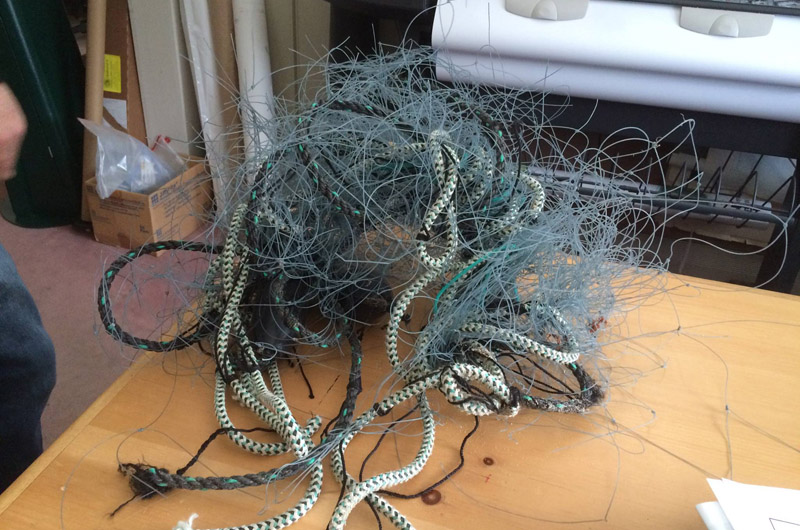The Wampanoag Tribe of Gay Head (Aquinnah) Natural Resources department gets lots of calls about seals on beaches. Some seals are just sunning themselves, as they are apt to do, while others are in distress, perhaps tangled in fishing gear. Many elude officers by heading back to the water before they can be freed.
But on Monday the stars aligned for a juvenile gray seal and three natural resources officers called to its rescue. This time, the seal’s predicament was clear, with a considerable amount of commercial grade monofilament fishing net and other ropes wrapped around the animal’s neck. By the end of the episode, and with the doors from an off-road vehicle playing a starring role, the seal was swimming unencumbered into the ocean.

Bret Stearns, director of the Wampanoag Tribe natural resources department, said a woman walking on the beach below the Gay Head lighthouse noticed the seal Monday afternoon and called Felix Neck Wildlife Sanctuary, which in turn contacted his department. “We get a lot of seal calls,” he said, but once they saw the photo it was clear they should have a look.
Mr. Stearns, joined by ranger Tyler Moreis and tribe laboratory technician Andrew Jacobs, took an off-road vehicle onto the beach and found the seal, which was still where it had been seen earlier by Madeleine Ezanno and Neil Hellstrom.
“The animal was fatigued but not exhausted,” he said, and still put up a fight. Using a method learned through trial and error the men removed the doors from the off-road vehicle to use them as a shield against the animal and to keep it in place during the extrication. “He did bite the door and pull the rubber off the door,” Mr. Stearns said. “It’s nothing to play with. We’ve obviously been trained in this and have experience thin this. This isn’t something anyone should be involved with.”
Using an array of tools, including a boat hook and EMT shears, the trio carefully cut away the fishing line, Mr. Stearns said. The process took about half an hour. “Having three people made a big difference and we don’t always have three people,” Mr. Stearns said.

The fishing line did not appear to have broken the seal’s skin, indicating to Mr. Stearns that the entanglement was recent or the seal was lucky. “Usually it cuts the skin quickly, and we’ve seen that in a lot of other cases,” he said.
A video posted on the natural resources department’s Facebook page shows Mr. Stearns and Mr. Jacobs pulling away the doors from the newly-freed seal, which doesn’t move for a moment before lumbering down to the water, where it quickly disappears beneath the waves.
“It appeared to be just fine, which is nice,” Mr. Stearns said. “We get quite a few seal calls and we don’t always have the opportunity to detain the animal. It’s nice that it worked out.”
Those who find stranded or entangled marine mammals are advised to call the NOAA hotline at 877-755-6622, Mr. Stearns said.







Comments (11)
Comments
Comment policy »